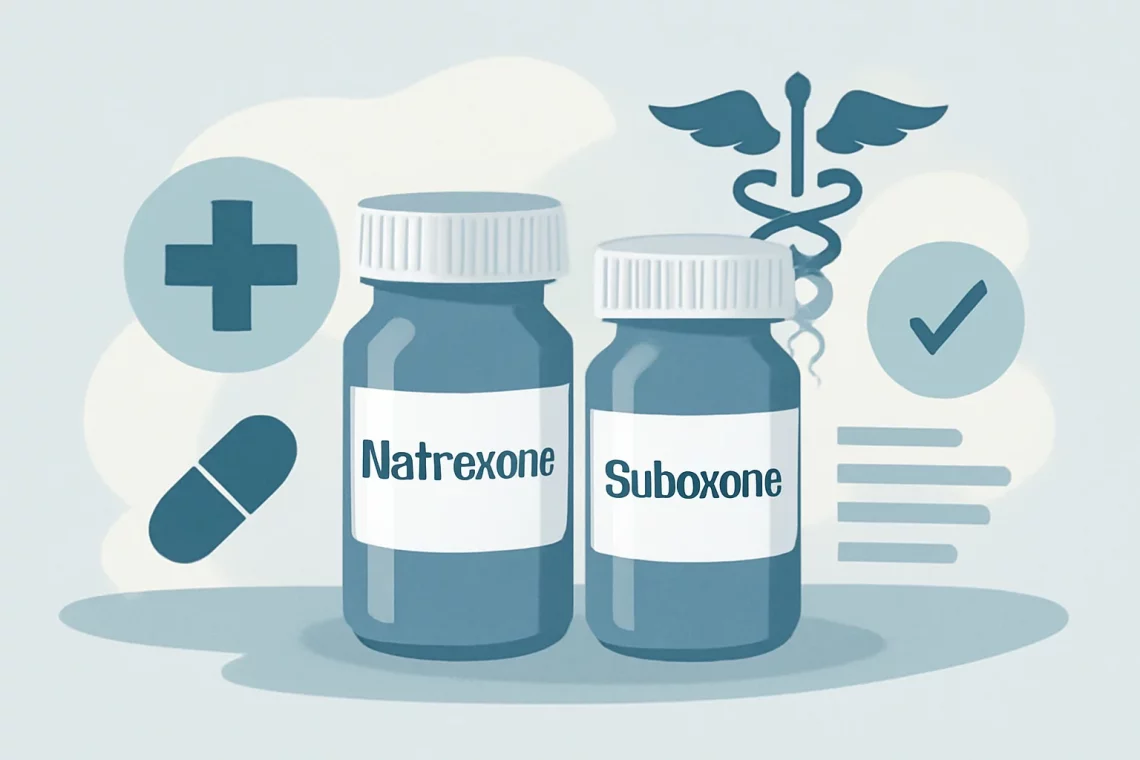
Naltrexone vs Suboxone: Understanding the Key Differences and Benefits
Naltrexone and Suboxone are two medications commonly used in the treatment of substance use disorders, particularly opioid dependence. As the opioid crisis continues to affect countless individuals and communities, understanding the distinctions between these medications becomes increasingly important. Both Naltrexone and Suboxone serve unique roles in the recovery process, yet they operate through different mechanisms and have varying applications.
Naltrexone is an opioid antagonist, meaning it blocks the effects of opioids at their receptor sites, thereby reducing cravings and the potential for relapse. In contrast, Suboxone is a combination of buprenorphine, a partial opioid agonist, and naloxone, which helps prevent misuse. This combination not only alleviates withdrawal symptoms but also minimizes the euphoric effects of opioids, making it a popular choice for those seeking recovery.
The choice between Naltrexone and Suboxone can significantly impact an individual’s recovery journey. Factors such as the severity of addiction, personal health history, and individual preferences play crucial roles in determining which medication might be more suitable. As we delve into the details of these two medications, we will explore their mechanisms, benefits, potential side effects, and factors to consider when choosing between them.
Understanding Naltrexone
Naltrexone is primarily known for its role in treating opioid and alcohol dependence. As an opioid receptor antagonist, it binds to the same receptors in the brain that opioids do, but it does not activate them. This action effectively blocks the euphoric effects of opioids, making it less likely for individuals to relapse after detoxification.
Naltrexone can be administered in two forms: oral tablets and an extended-release injectable formulation. The oral form is typically taken daily, while the injectable form can be administered once a month, offering greater convenience for some patients. The choice between these forms often depends on individual lifestyle and adherence to medication regimens.
One of the significant advantages of Naltrexone is its ability to reduce cravings without causing physical dependence. Unlike some other medications used in addiction treatment, Naltrexone does not produce a “high” or lead to addiction. This makes it a safer option for individuals who have completed detoxification and are looking to maintain their recovery in the long term.
However, Naltrexone is not without its challenges. Patients must be opioid-free for a minimum of seven to ten days before starting treatment to avoid precipitating withdrawal symptoms. This requirement can pose a barrier for some individuals who struggle with severe dependence. Additionally, because Naltrexone blocks the effects of opioids, it can make pain management more complicated for patients who may need pain relief after starting the medication.
In summary, Naltrexone is a powerful tool for maintaining recovery from opioid and alcohol dependence. Its mechanism of action and lack of addictive potential make it an appealing choice for many. However, the requirement for being opioid-free before starting treatment and potential complications with pain management are important considerations for patients and healthcare providers.
Exploring Suboxone
Suboxone, a combination of buprenorphine and naloxone, has become a cornerstone in the treatment of opioid use disorder. Buprenorphine is a partial agonist, which means it activates opioid receptors in the brain but to a much lesser degree than full agonists like heroin or prescription painkillers. This action helps to alleviate withdrawal symptoms and cravings while minimizing the risk of misuse due to the presence of naloxone, which discourages intravenous use.
Suboxone is available in various formulations, including sublingual films and tablets, allowing for flexible administration. Patients typically take Suboxone daily, and the medication can be prescribed in an outpatient setting, making it accessible for many individuals seeking help.
One of the primary benefits of Suboxone is its ability to stabilize individuals during the early stages of recovery. By addressing withdrawal symptoms and cravings, it allows patients to focus on therapy and other aspects of recovery without the overwhelming distractions of active addiction. Additionally, the ceiling effect of buprenorphine reduces the risk of overdose, making it a safer option compared to full agonist opioids.
However, Suboxone also presents challenges. Some individuals may experience side effects such as constipation, nausea, or headache. Furthermore, the potential for misuse, although lower than with full agonists, still exists, particularly if individuals attempt to use Suboxone inappropriately.
Overall, Suboxone is a highly effective medication for treating opioid use disorder, providing relief from withdrawal and cravings while allowing individuals to engage in their recovery process. Its accessibility and manageable side effects make it a popular choice among both patients and healthcare providers.
Comparing Efficacy and Side Effects
When evaluating Naltrexone and Suboxone, it is essential to consider their efficacy and potential side effects. Both medications are effective in reducing cravings and preventing relapse, but they operate differently and may be more suitable for different individuals based on their specific circumstances.
Naltrexone’s primary strength lies in its ability to block opioid receptors and reduce cravings without causing physical dependence. This makes it an excellent option for individuals who have already completed detoxification and are committed to maintaining their sobriety. However, the requirement to be opioid-free before starting treatment can limit its use for some patients.
On the other hand, Suboxone’s partial agonist properties provide a smoother transition for individuals in recovery, particularly during the early stages when withdrawal symptoms can be most challenging. Its formulation also allows for easy administration, which can improve adherence to treatment.
In terms of side effects, Naltrexone is generally well-tolerated, but some users may experience nausea, headache, or fatigue. Suboxone users may encounter side effects such as constipation, dizziness, or sedation, which can affect daily functioning.
Ultimately, the choice between Naltrexone and Suboxone should be based on individual needs, preferences, and medical history. Engaging in an open dialogue with healthcare providers can help patients navigate their options and find the most appropriate treatment for their recovery journey.
Factors to Consider When Choosing Between Naltrexone and Suboxone
Choosing between Naltrexone and Suboxone involves several considerations. Each individual’s situation is unique, and what works for one person may not be suitable for another. Here are some key factors to evaluate:
1. **Severity of Addiction**: Individuals with a severe opioid dependence may benefit more from Suboxone, due to its ability to mitigate withdrawal symptoms and cravings effectively. For those who have successfully completed detox and are looking for long-term maintenance, Naltrexone might be a better fit.
2. **History of Substance Use**: Patients with a history of multiple substance use disorders may find Naltrexone advantageous, as it can help manage cravings for both opioids and alcohol without creating physical dependence. Conversely, individuals who have experienced severe withdrawal symptoms may prefer the supportive nature of Suboxone.
3. **Personal Preference**: Some individuals may feel more comfortable with a medication that does not have the potential for dependency, making Naltrexone appealing. Others may prefer the immediate alleviation of withdrawal symptoms provided by Suboxone.
4. **Access to Treatment**: The availability of treatment options can also play a significant role in medication choice. Suboxone can often be prescribed in outpatient settings, making it more accessible for those who may have difficulty attending regular appointments.
5. **Side Effects**: Potential side effects and how they might impact daily life should be considered. Individuals who prioritize stability and reduced side effects might lean towards Naltrexone, while those who need immediate relief from withdrawal might choose Suboxone despite its potential side effects.
In conclusion, the decision between Naltrexone and Suboxone should be made collaboratively between patients and their healthcare providers. By taking into account the individual’s history, preferences, and specific circumstances, a more tailored approach to treatment can be achieved, ultimately enhancing the chances of successful recovery.
**Disclaimer**: This article is for informational purposes only and should not be considered medical advice. Always consult with a healthcare professional for medical concerns or treatment options.




